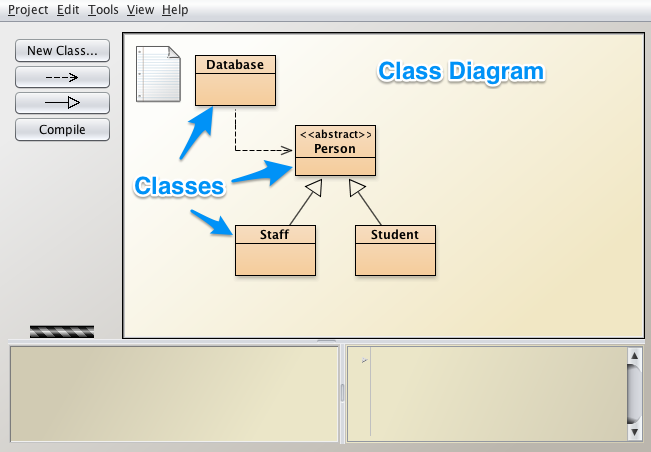

BlueJ’s toolset is not a subset of one of the bigger systems.

EXAMPLE BLUEJ PROGRAM PROFESSIONAL
One of the leading design goals of BlueJ is well expressed in a famous quote by Antoine de Saint Exupéry:īut when there is nothing left to take away.”īut it is also important to note that this does not mean that an educational environment is simply a cut-down version of a professional one. In fact, one of the greatest achievements of BlueJ is to present a complex problem domain-programming-in a simple fashion. This should not be mistaken as simplicity of functionality: BlueJ offers some sophisticated tools that help learners along the way, and we will discuss some of them shortly. These are the important tools for learning to program and forming your mental models.īlueJ’s interface (see Figure 1) appears very simple and unthreatening.
EXAMPLE BLUEJ PROGRAM CODE
Students look at lines of Java code and struggle to understand the difference between classes and objects.īlueJ has various bits of functionality not found in many other environments most important among them is a greater level of interactivity and visualization. Objects, for example, hardly exist as a tangible abstraction in a typical interface. These are not well represented in professional environments.

Yet, what is really much harder, and much more important, to learn are the fundamental abstractions: classes, objects, and interactions. Beginners using these systems stare at lines of code, so it is not surprising that what they think about is lines of code. The main focus in these environments is on source code. They provide a great toolset for programmers who know what they are doing, but they do little to help learners develop the mental models they need to become good programmers. Environments for Experts, Environments for LearnersĮnvironments designed for professionals-NetBeans, Eclipse, and the like-work very well for experts. Beginners need to develop this mental model, and an educational programming environment must help learners do so. All of us who have been around programming for a while know that syntax is neither the interesting nor the hard part.Īnd this is the crucial difference between beginners and experts: experts have a well-developed mental model of the fundamental principles of object orientation, while beginners do not.


 0 kommentar(er)
0 kommentar(er)
